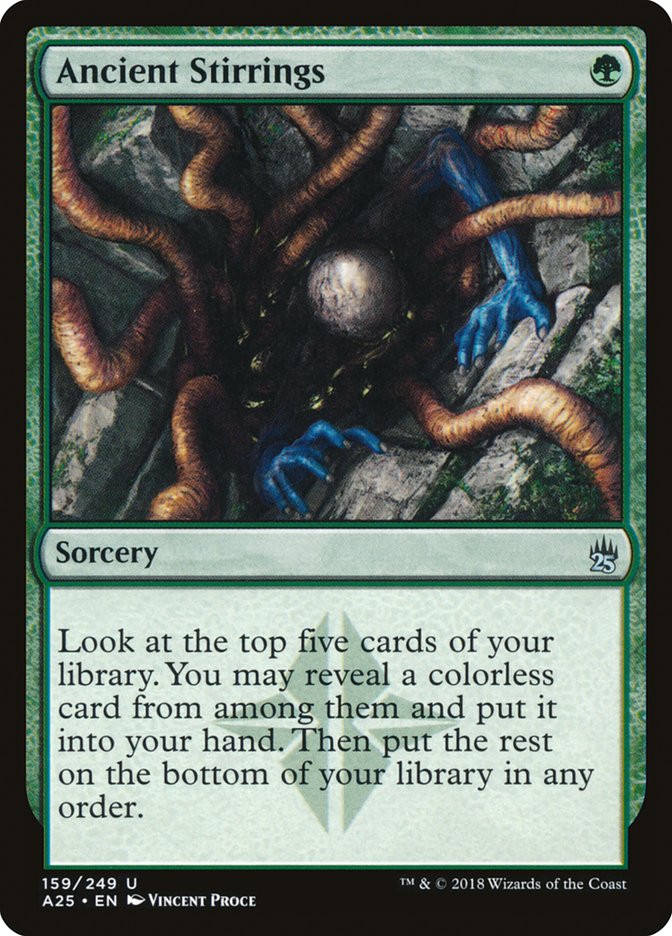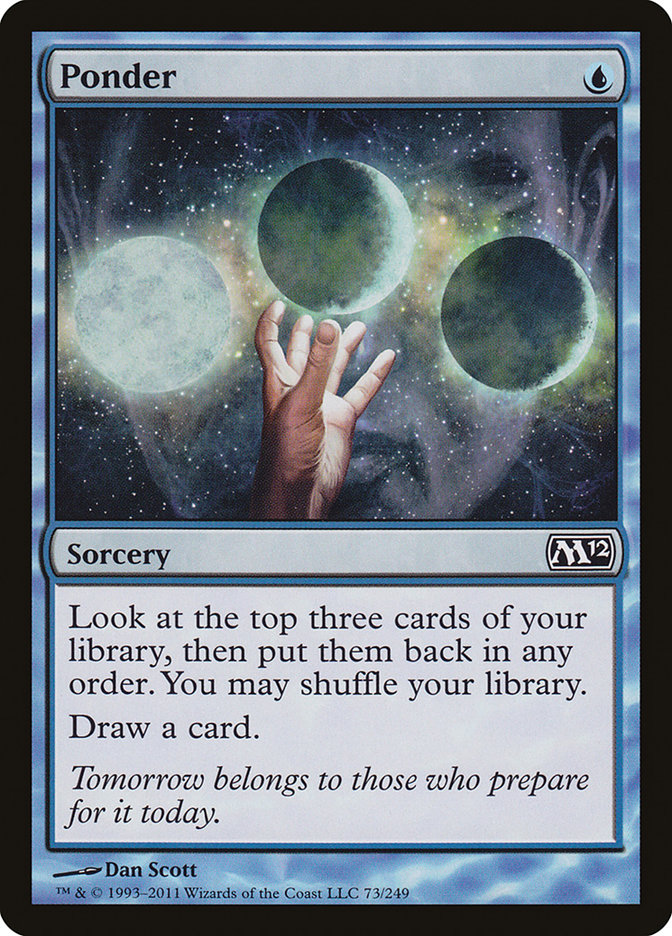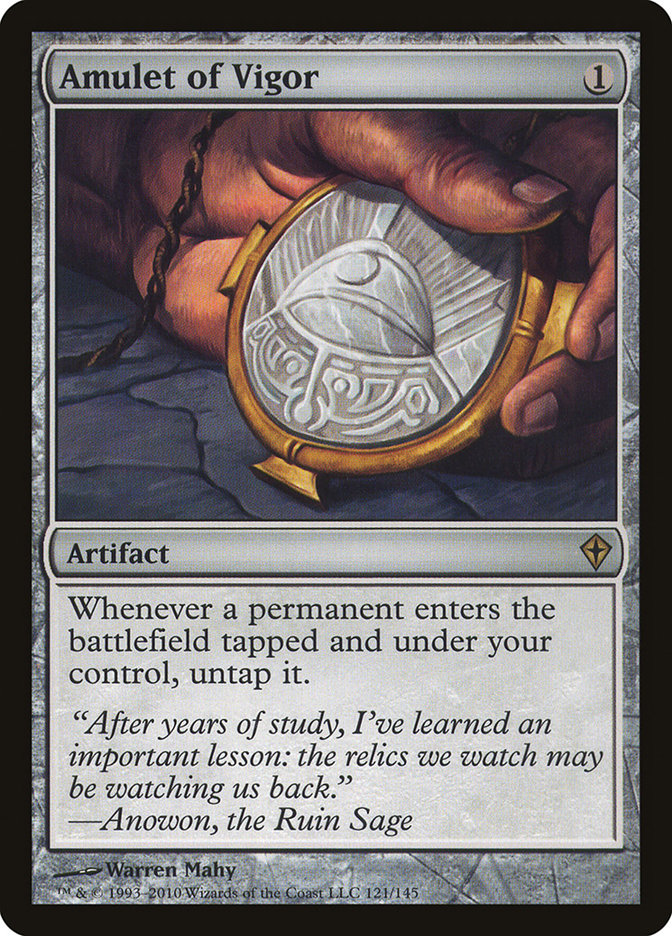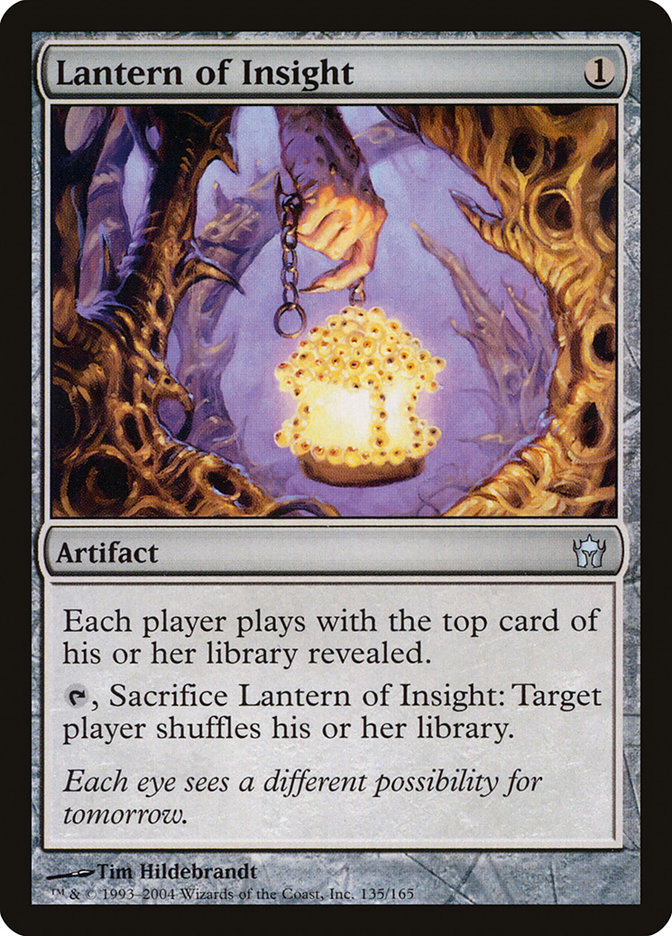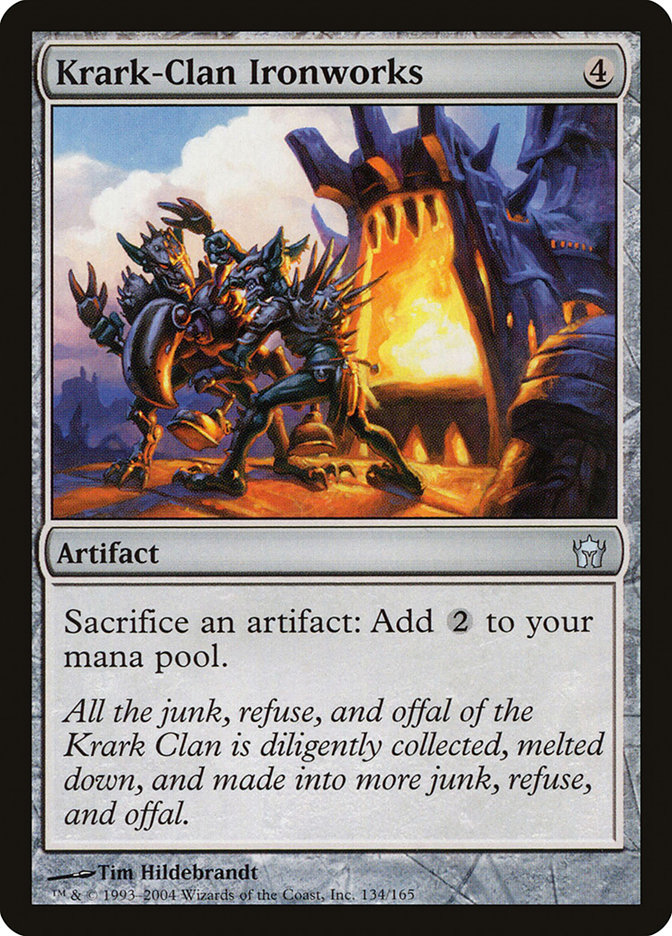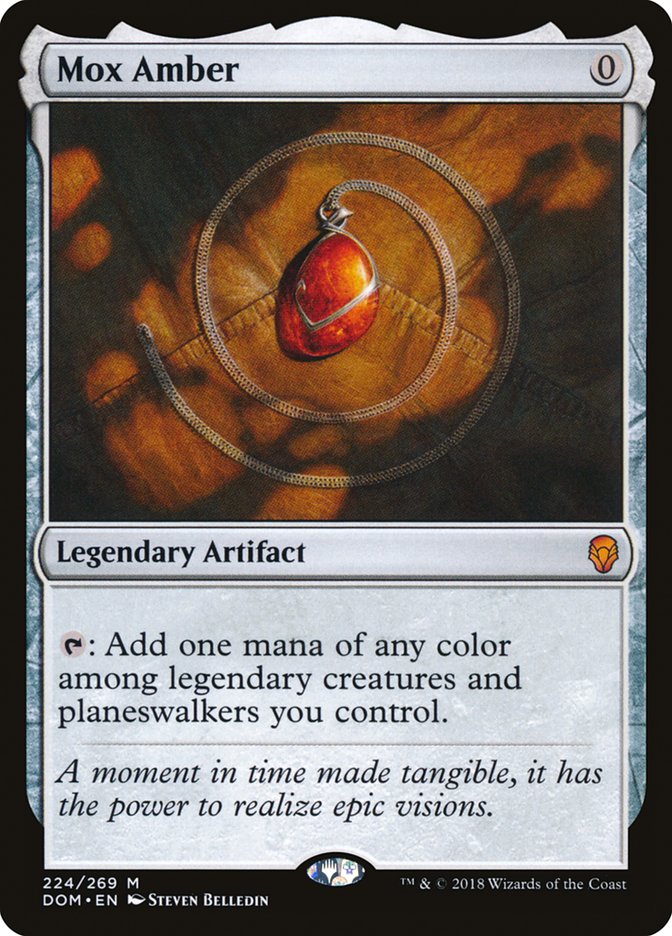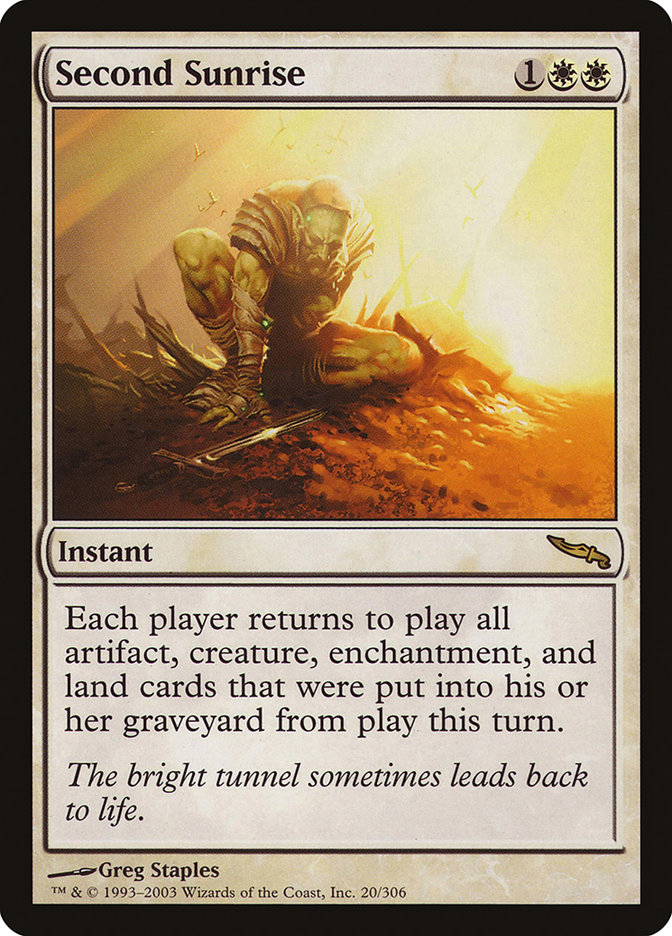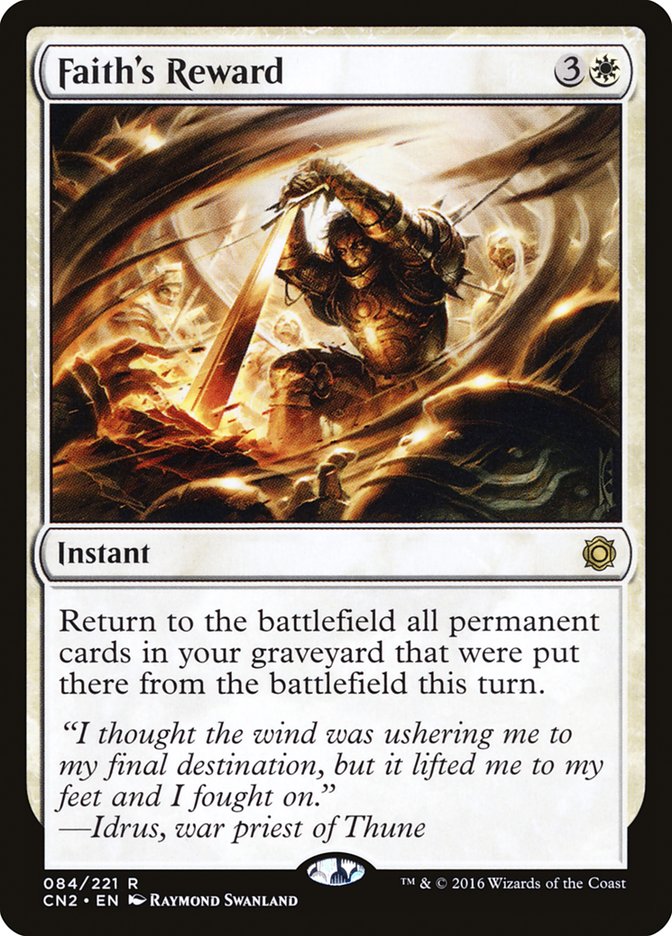For several years now, Ancient Stirrings has been on the unofficial Modern
watchlist, the cards players and R&D members regularly discuss the
possibility of banning. After the breakout performances of Krark-Clan
Ironworks combo by
Matt Nass
and
Matt Nass
, the heat picked up on Ancient Stirrings and many players thought we’d
finally seen the end of it.
One might argue that calmer heads prevailed and Ancient Stirrings lived to
see another season, or, one such as Ryan Overturf might argue that a
mistake was made and Modern is worse for it until the next announcement
when R&D can right their wrongs.
I’m one of the players who regularly calls attention to Ancient Stirrings
as a card that would be reasonable to ban from Modern at any point–to my
mind, the only cards in Modern that are possibly more powerful are Mox
Opal, Inkmoth Nexus, the Urza lands, the fetchlands, Thoughtseize, and
Lightning Bolt. The effect is more powerful than Ponder, which is banned,
so it’s strange that Ancient Stirrings is legal.
To understand why this is the case, you must understand the purpose of the
Modern banned list. This is no small feat, as I think the purpose has kind
of shifted over time. As originally imagined/advertised, Modern was
supposed to be the format you could retire old Standard decks to with a few
updates so that your cards would still have a home. I haven’t seen a lot of
Siege Rhino/Den Protector decks since Khans of Tarkir left
Standard and at this point, Modern is way too powerful to just retire a
Standard deck into, but it’s an extremely popular format in its own right.
One could argue, as WotC does, that a lot of that popularity is a direct
result of the diversity the field that format has managed to settle into,
with a bare minimum of 30+ tier one or tier two decks.
It’s extremely important for a non-rotating format that it maintain that
level of diversity, because if there are only five different decks, it’s
too easy to have played every possible combination in the first year enough
that you’re not that interested in playing them more the next year. Some
players have basically played Affinity since the format’s inception, and
they can still have fun because their games are always different because
their opponent always tries to attack them in different ways.
As a concession to this, not all matchups are interesting. When you have
this many decks that play widely varied gameplans, sometimes they just
don’t interact in meaningful or interesting ways. Sometimes you get paired
against whatever the nightmare matchup for your deck happens to be, and you
basically just can’t compete, but that’s fine because you can just play
another game.
Pro players feel the cost of this the most, because that one match where
they just couldn’t compete might be one where they were playing for
hundreds or thousands of dollars. The more casual a player is, the more
they can just take a loss and move on to the next game which will be more
interesting.
Modern is ultimately a format designed for the more casual players who want
to play Magic once a week or once a month and can’t keep up with a rotating
Standard format where they’ll only get to use their deck a handful of times
before they need to get all new cards. This means sometimes it can be right
to let a deck exist even if it’s not as fun to play against as an average
deck because playing against it every now and then is more interesting than
never playing against it. Maybe playing against Ironworks isn’t very fun,
but your first match against Ironworks is probably more interesting than
your tenth match against Humans.
I’m going somewhere with this…
I hate tutor effects in Magic. I own a powered Cube, but there are no
tutoring effects in the Cube. I like varied game play and I don’t like that
tutors let you just cast the same cards every game.
Ancient Stirrings is a horrible offender here. Amulet, Lantern, and
Ironworks are all decks that are accurately named for a single artifact in
them, and they all got to exist because Ancient Stirrings makes it so easy
to find the artifact those decks are built around. In general, I think
Magic is less interesting if you can build your deck assuming there’s a
certain card you’ll always have (sorry, Commander). I’m willing to concede
that Stirrings decks collectively are less fun to play against than
non-Stirrings decks.
Despite that, Modern as a whole is probably more fun to play when you
sometimes play against Stirrings decks because of the value of format
diversity.
However, the argument goes beyond that.
Ancient Stirrings is a card that’s only busted if you build your deck
around it. If it only finds lands, it’s a very weak card. When evaluating
the strength of card like that, you must look at them in context. For
example, Mox Opal is, on paper, in a way of thinking, three times harder to
use than Mox Amber (more realistically, the point is just that either card
is only as good as the best shell that exists for it).
In practice, I think Mox Opal is the strongest card in Modern and Mox Amber
may or may not be playable. If a few more cycles of great one and two mana
legendary creatures existed, maybe Mox Amber would need to be banned. The
question of whether Ancient Stirrings needs to be banned, therefore, kind
of reduces to whether any or all the decks that use it best are too
powerful.
Before I get to that, I want to point out that in the interest of maintaining diversity, which is essentially to
say, “in line with the prime directive of Modern,” it is best if the most
powerful cards are linear cards. When the best cards are good in anything,
like Lightning Bolt and Thoughtseize, they don’t lend any identity to the
decks they’re in, and the format is too likely to collapse into everyone
playing a pile of all the best cards (Jund). When there are a lot of strong
linear payoffs that pull in different directions, there are tradeoffs to
playing each of the best cards, so you must choose which “best card” to
use, as you can’t play with all of them.
Moreover, linear decks tend to be more exploitable. The clearer and defined
your deck’s game plan is and the more cards in it share some element, the
easier it is for opponents to attack that deck by countering that strategy
or attacking that class of card. If all the most powerful decks are decks
like Dredge and Affinity, then they’re all capable of becoming victims of
their own success to where they’re played enough that people play enough
sideboard cards to reliably beat them, so whenever they’re the deck to
beat, they just get beaten and something else takes their place, keeping
the format fresh.
On the surface, you might think, as Ryan will argue, that it’s a problem if
Ironworks is the best deck because it plays repetitive, “non-interactive”
games and allow the player playing the deck to use most of the clock and
potentially play long turns that extend their match well beyond the time
allowed for a match. As it happens, I think most of those points are
misconceptions.
Yes, the deck is extremely consistent and repetitive. It does essentially
the same thing every game, and yes, that’s kind of lame, but very far from
new or banworthy. See Tron, Storm, Dredge, or Infect. They all have enough
redundancy that they’re basically going to present the same outline every
game.
While one can compare Ironworks to Eggs, which was banned for tournament
logistics, the reality is that the two combos are very different on that
end because Ironworks involves a deterministic loop, where Eggs just gets
to a point where it has a lower and lower probability of fizzling, but
because it needs to keep drawing new cards to execute its combo, it takes a
long time to reach the point where the game is 100% over.
Ironworks is still not as widely understood as it will be, but it simply
doesn’t take that much time to get to a point where a player can
demonstrate a Myr Retriever loop that will end the game. It takes far too
much time on Magic Online, because you can’t automate the loop, but in
paper, going off really isn’t that horrible.
As to the extent to which you’re playing an interactive game of Magic,
creature removal, artifact removal, graveyard removal, counterspells,
discard, mana denial, and basically any other form of disruption are all
impactful against Ironworks, but they have counterplay to all of them. The
text of opposing cards matter, there are tons of permanents Ironworks will
have to acknowledge and find ways to interact with, but the deck plays
cards that let them do that. I’d argue that as far as combo decks go,
Ironworks is on the far extreme of the interactive side or the
interactive/non-interactive divide.
Ultimately, my point is that if Ironworks needs to be banned, it should be
for power alone, not for fun or tournament logistics reasons, as even
though it has cosmetic similarities to Eggs, the real issues aren’t
actually present in sufficient quantities to warrant action.Is the deck
good enough to warrant a ban on power level alone? Maybe, but certainly not
at this point based on precedent about when action is taken in Modern.
With decks like Amulet and Splinter Twin, we needed months of consistent
dominant performances. The same player winning two GPs and then taking up
maybe one slot per top 8 in the next few events is enough to call it a tier
one deck, but nowhere close to enough to justify action.
Even if action were justified, is Ancient Stirrings really the right
card to ban?
If you ban Ancient Stirrings, you incidentally remove Amulet, Lantern,
Mono-Green Tron, and probably R/G or Bant Eldrazi from the format as well.
You can make the case that that’s desirable, but it’s a difficult case to
make in the face of an understanding of the prime directive being
diversity.
If Ironworks is the problem, you could ban Ironworks itself. This is a
blunt solution that 100% wipes out the deck, but it’s on the table.
The other option is to ban Mox Opal. This would almost certainly also kill
Lantern and Affinity. Again, a hard sell, but fewer decks than Ancient
Stirrings. More importantly, I’d argue that Mox Opal is the real problem
card.
As powerful as Ancient Stirrings is, at the end of the day, it’s worse than
if you’d just gotten luckier and drawn the card you wanted in the first
place. No one’s nut draw includes Ancient Stirrings. With Mox Opal, you get
to effortlessly break a fundamental rule of Magic. If Mox Opal is in your
deck, all your nut draws involve Mox Opal.
As much as I don’t like super powerful card selection, if we got to the
point where something had to go, I’d personally prefer to see it be Mox
Opal.
Ultimately, I think we’re still a long way from that point.
To recap, the basic argument against banning Ancient Stirrings:
- A diverse Modern is a healthy Modern
- Linear decks perpetuate diversity
-
Linear decks force you to build around your most powerful
cards, making it impossible to play all the best cards in a
single deck. -
Linear decks are exploitable, meaning they’re easier to
target and beat when they’re expected in large numbers. -
Ancient Stirrings is a powerful linear card that allows several
very different archetypes to exist, meaning it’s one of the single
hardest working cards to maximize diversity. -
While it’s over the top powerful, it’s only as good as the decks it
creates, and none of them are too good. -
If any were too good, it’s not clear that it would be the best card
in them to ban.


